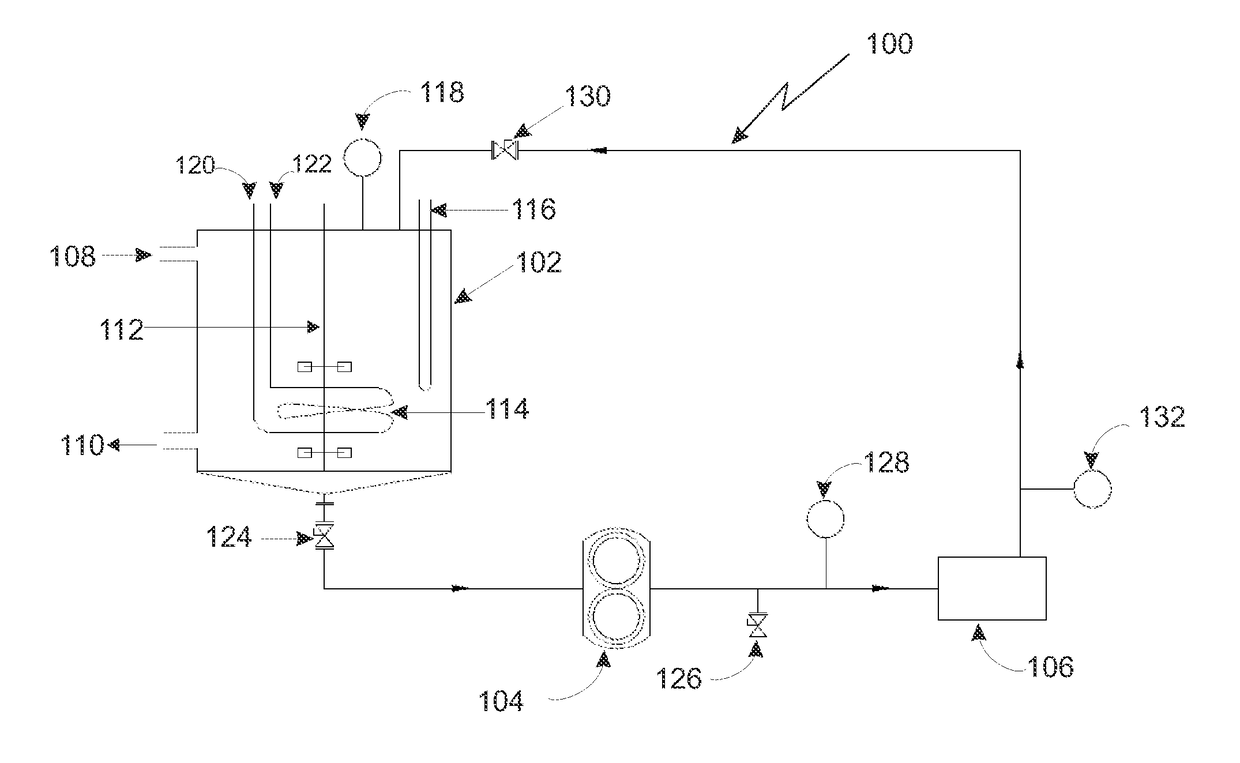Method for preparation of perfluoroalkyl sulfenyl chloride
a technology of perfluoroalkyl sulfenyl chloride and sulfenyl chloride, which is applied in the direction of measuring apparatus components, mixers, measuring apparatus housings, etc., can solve the problems of inherently dangerous and unsafe processes, difficult or impossible to directly prepare fluoro derivatives, and characteristically difficult to synthesize fluoro-compounds, etc., to achieve simple, safe, convenient and cost-effective effects
- Summary
- Abstract
- Description
- Claims
- Application Information
AI Technical Summary
Benefits of technology
Problems solved by technology
Method used
Image
Examples
example 1
[0109]Anhydrous acetonitrile (2.0 liters), activated potassium fluoride (6.0 mole), Potassium bifluoride (0.3 mole) and ortho-chlorobenzyl chloride (1.0 mole) were charged in a glass reactor having a central vertical stirrer and a vertical condenser to obtain a reaction mass which was cooled to −15° C. To this chilled thiophosgene (1.2 mole) in 300 ml of acetonitrile was injected over a period of about 2 hours. The reaction mixture was then stirred for 2 hours and temperature of mixture was raised to 0° C. The reaction mixture was again stirred for 2 hours and temperature was raised to 30° C. followed by keeping the mixture for 2 hours. Thiophosgene 0.2 mole was injected into the reaction mixture and temperature of the mixture was raised to 80° C. and kept for 2 hours at 80° C. which was then cooled to 30° C. Further, thiophosgene (0.2 mole) was injected and the reaction temperature was raised to 80° C. After 10 hours only 1% conversion was observed. Even with further maintenance fo...
example 2
[0110]Anhydrous acetonitrile (2.0 liters), tetramethylammonium fluoride (3.04 moles) and ortho-chlorobenzyl chloride (1.0 moles) were charged in a glass reactor having a central vertical stirrer and a vertical condenser to obtain a reaction mass which was cooled to −40° C. To this chilled thiophosgene (1.0 mole) in 300 ml of acetonitrile was injected over a period of about 2 hours. The reaction mixture was stirred for 2 hours and the temperature of the mixture was raised to 0° C. followed by stirring the reaction mixture for 2 hours. The temperature of the mixture was then raised to 30° C. and the mixture was kept for 2 hours. To this reaction mixture thiophosgene (0.2 mole) was injected and the temperature was raised to 80° C. The mixture was kept for 2 hours at 80° C. and then cooled to 30° C. Further, 0.2 mole of thiophosgene was injected and the temperature of the mixture was raised to 80° C. After 10 hours only 2% conversion was observed. Even with further maintenance for sever...
example 3
[0111]Anhydrous acetonitrile (2.0 liters), activated potassium fluoride (6.0 mole), Potassium bifluoride (0.3 mole), ortho-chlorobenzyl chloride (1.0 mole) and benzyltrimethylammonium fluoride (0.2 mole) were charged in a glass reactor having a central vertical stirrer. The process given in Example 1 was repeated. After 10 hours only 1% conversion was observed. Even with further maintenance for several hours no additional conversion was observed.
PUM
| Property | Measurement | Unit |
|---|---|---|
| Temperature | aaaaa | aaaaa |
| Temperature | aaaaa | aaaaa |
| Temperature | aaaaa | aaaaa |
Abstract
Description
Claims
Application Information
 Login to View More
Login to View More - R&D
- Intellectual Property
- Life Sciences
- Materials
- Tech Scout
- Unparalleled Data Quality
- Higher Quality Content
- 60% Fewer Hallucinations
Browse by: Latest US Patents, China's latest patents, Technical Efficacy Thesaurus, Application Domain, Technology Topic, Popular Technical Reports.
© 2025 PatSnap. All rights reserved.Legal|Privacy policy|Modern Slavery Act Transparency Statement|Sitemap|About US| Contact US: help@patsnap.com



